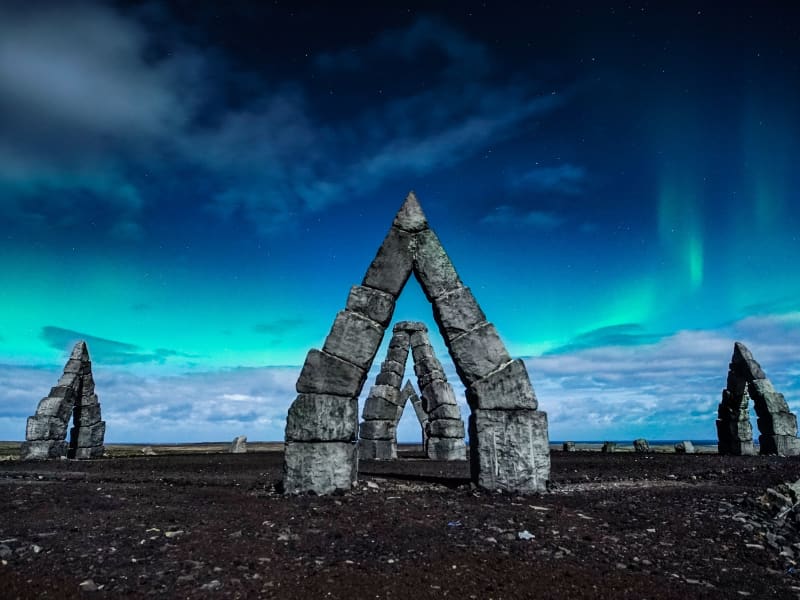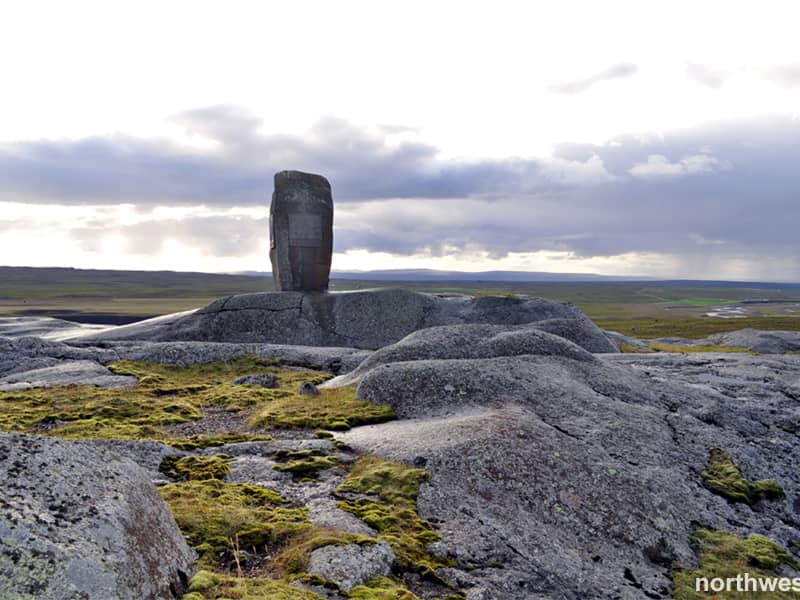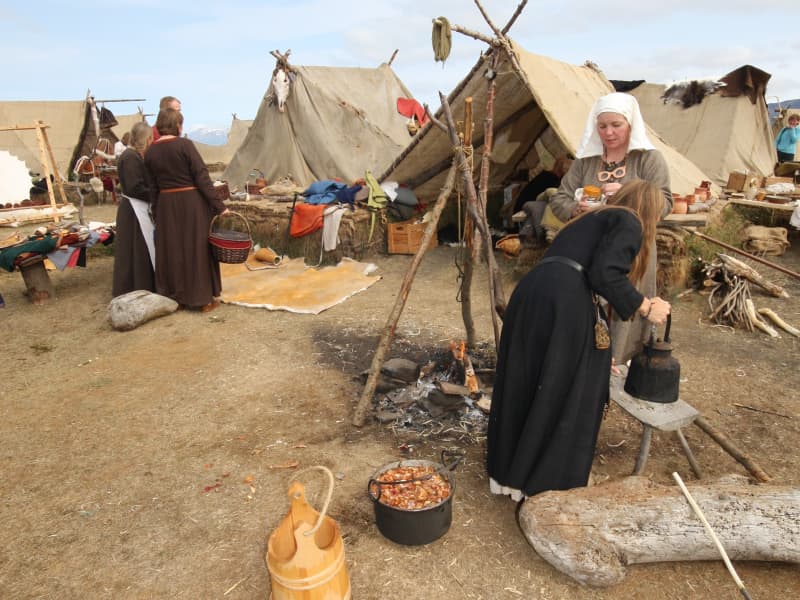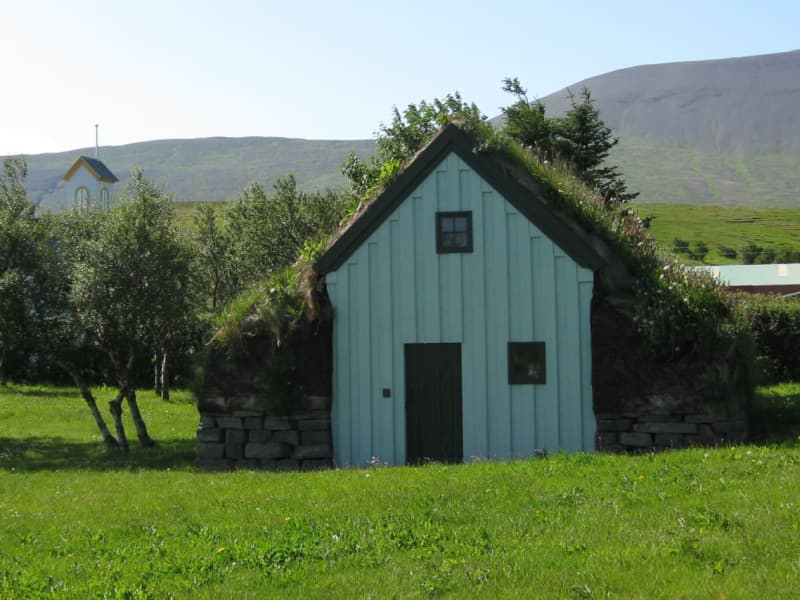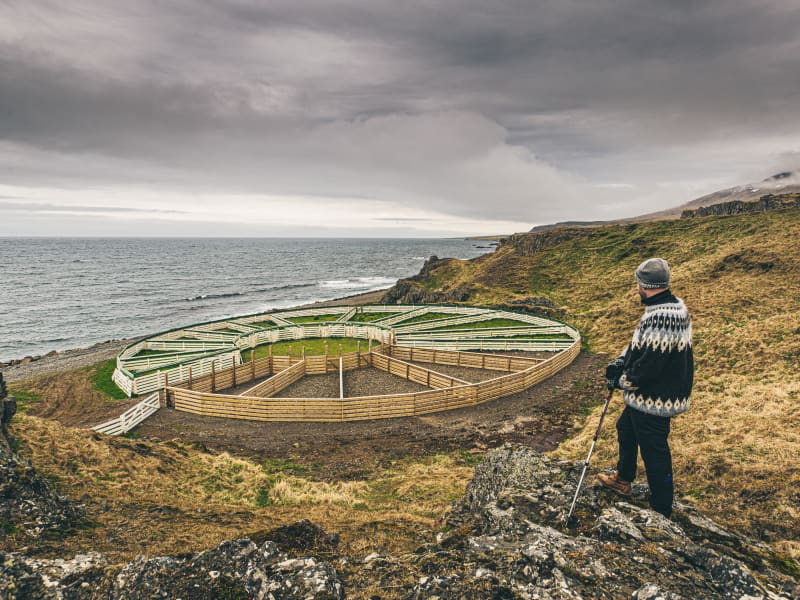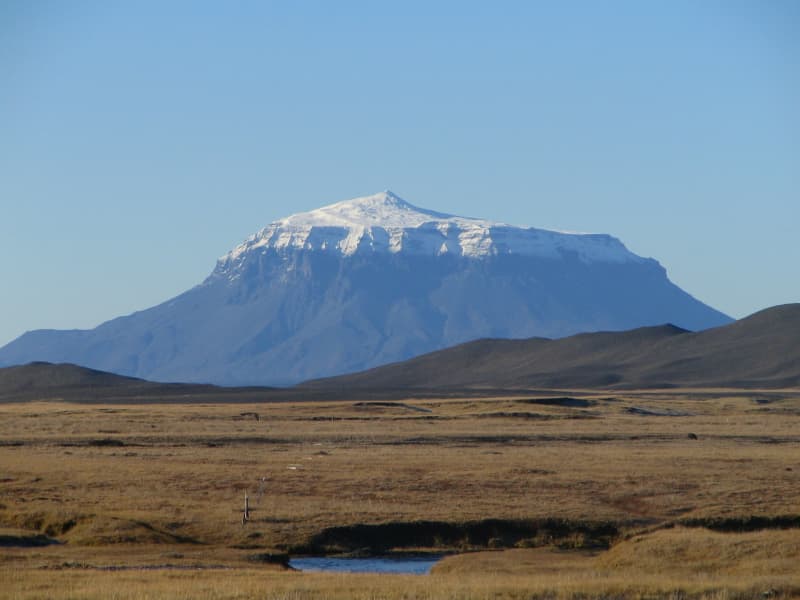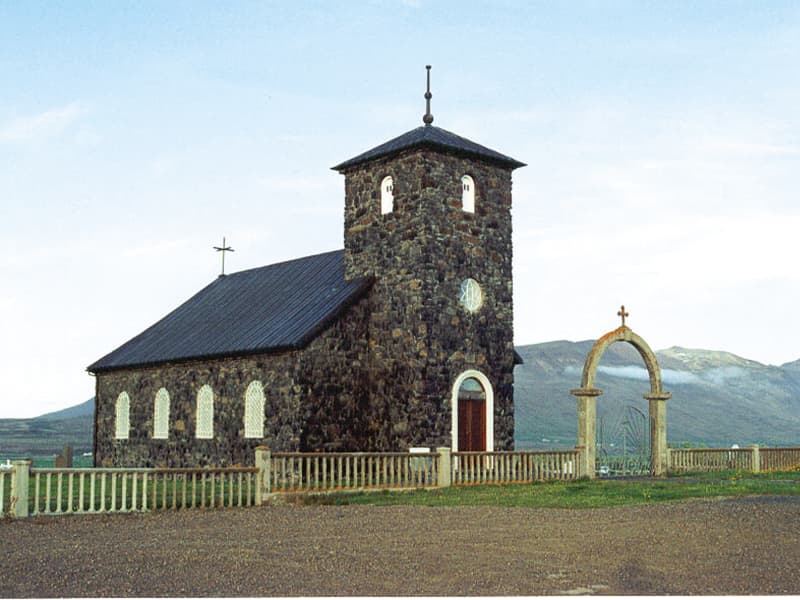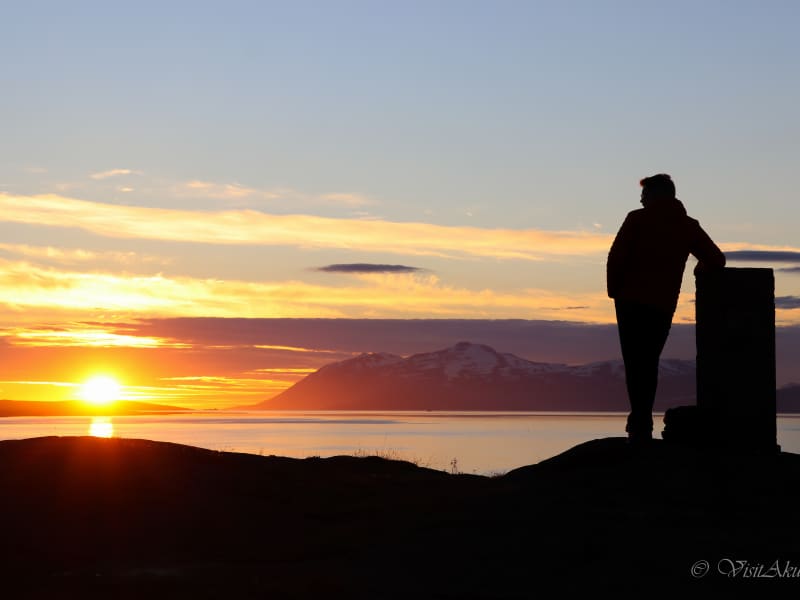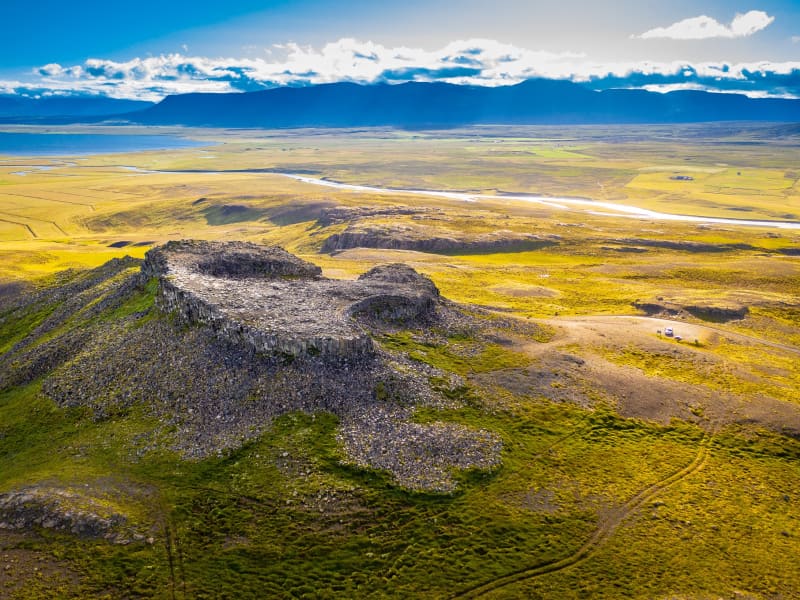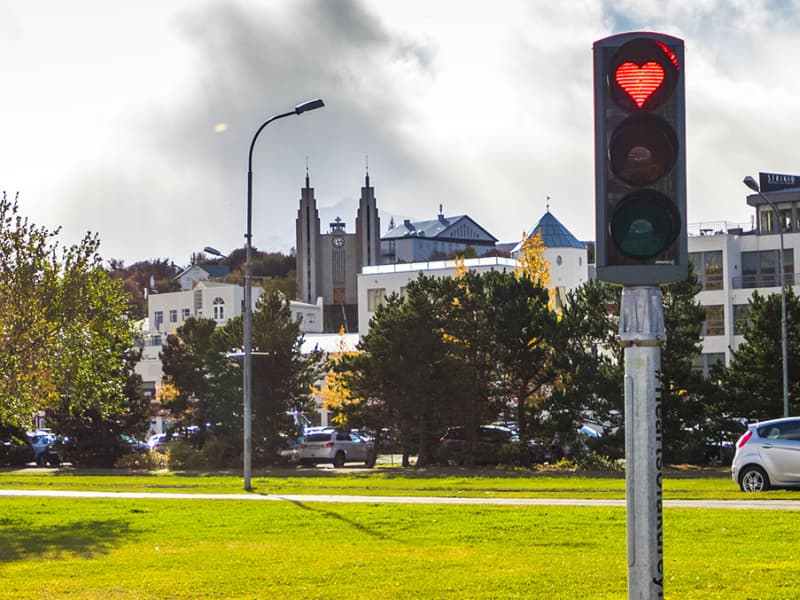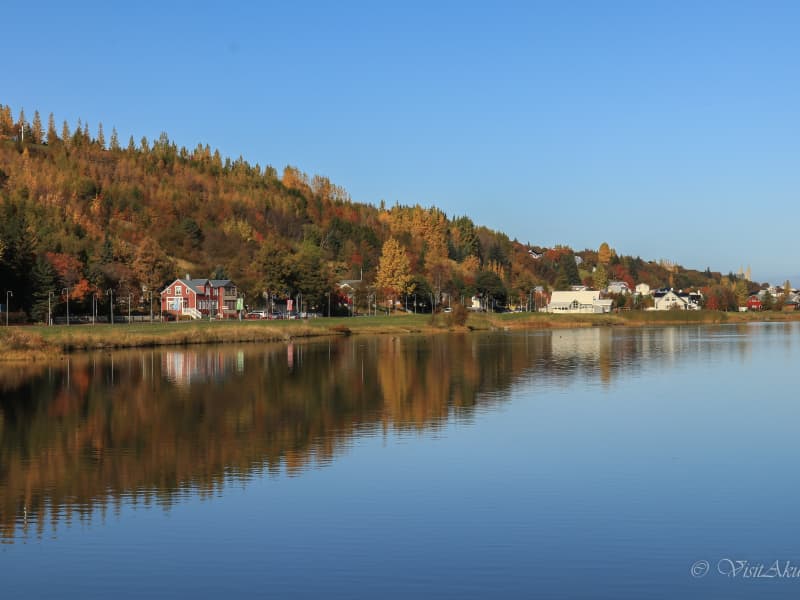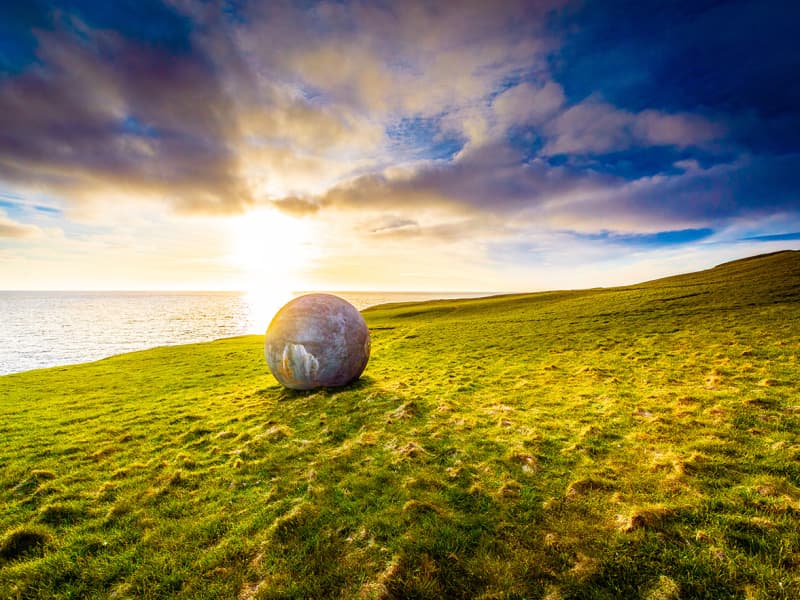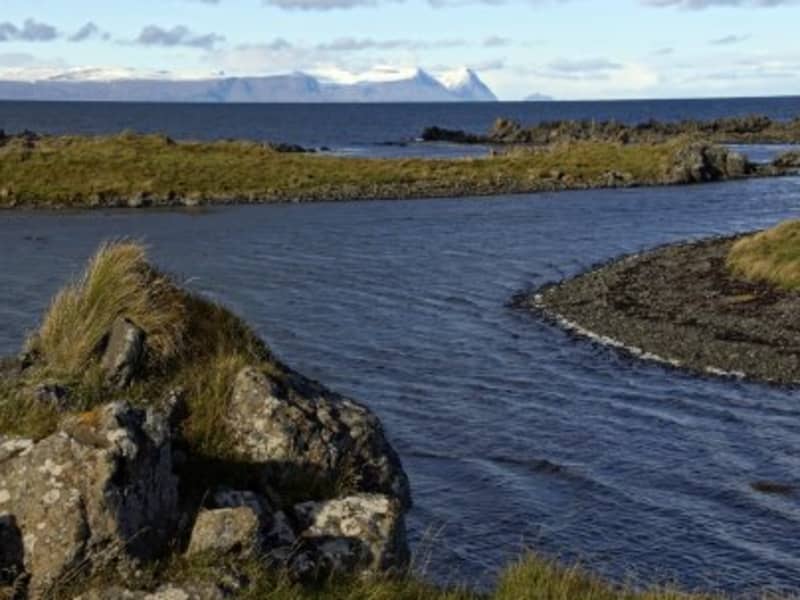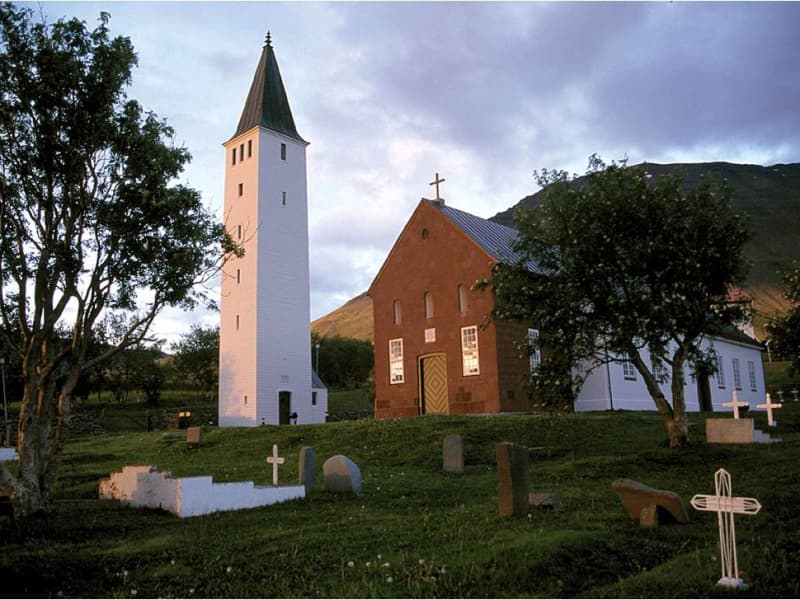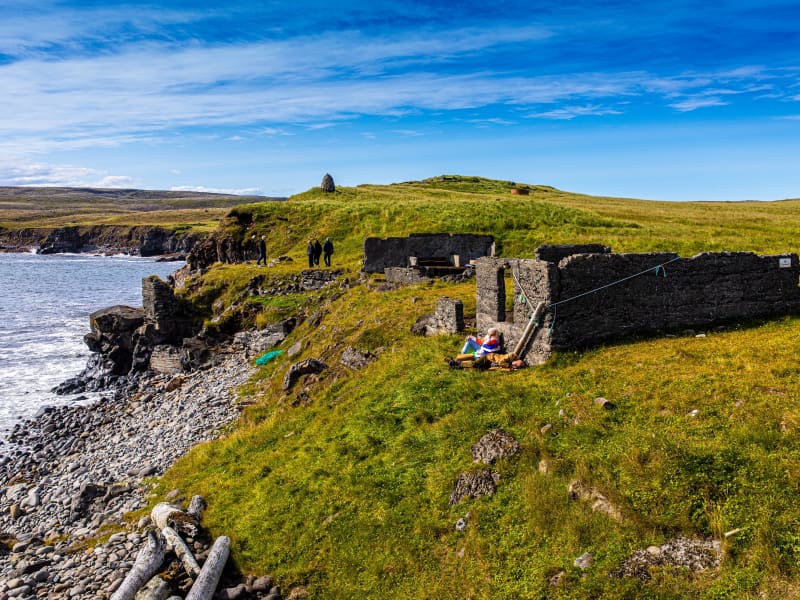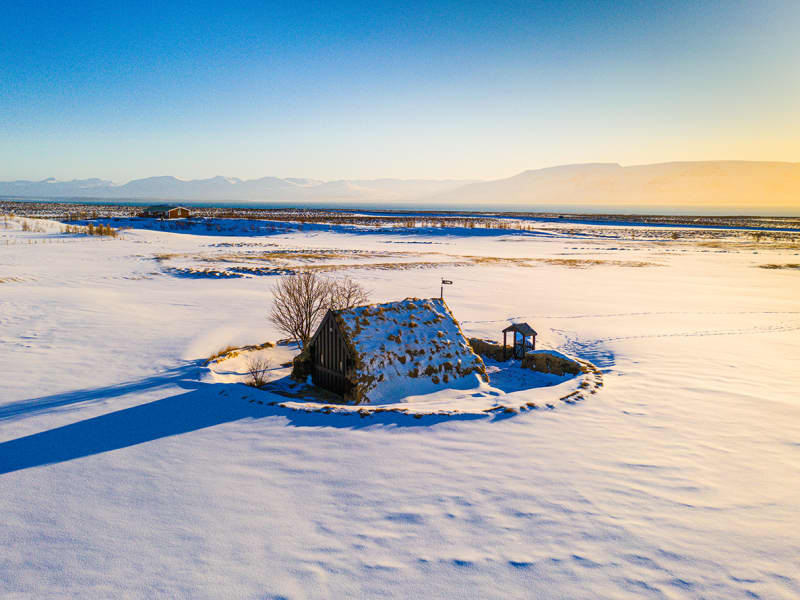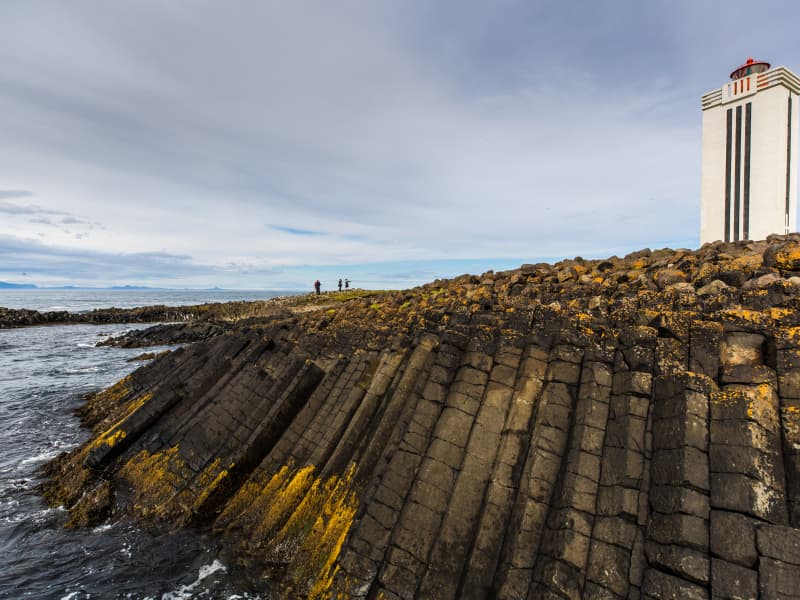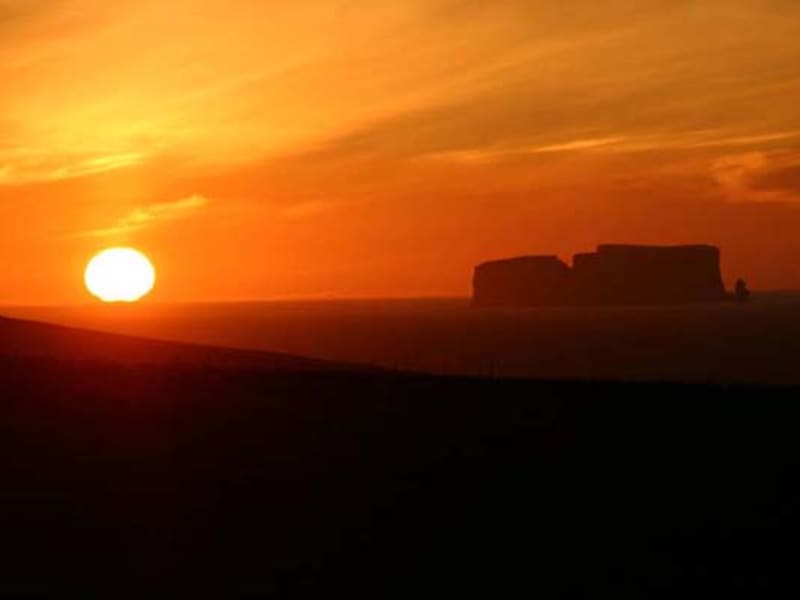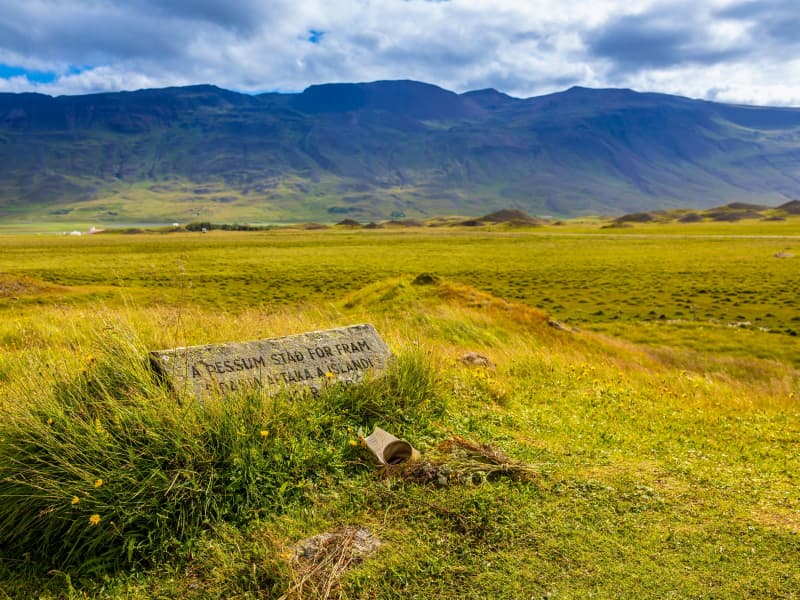Arctic Henge
Set in Raufarhöfn, one of the most remote and northernmost villages in Iceland where the Arctic Circle lies just off the coast, the Arctic Henge (Heimskautsgerðið) is under construction. Similar to its ancient predecessor, Stonehenge, the Arctic Henge is like a huge sundial, aiming to capture the sunrays, cast shadows in precise locations and capture the light between aligned gateways.
History
Heimskautsgerðið (The Arctic-Henge) has it s roots in the innovators Erlingur Thoroddsen’s speculations about the possibility to use endless vistas, where nothing obstructs the horizon, and the midnight sun. The idea to use the dwarf names from the eddic poem Völuspá (Prophecy of the Seeress) and modernize some aspects of the old world of the Sagas, soon became a part of these speculations. The first version of the idea is from 1998 but in 2004 it was finalized, with allusions to mythology and folklore, designed to interact with the unique natural light. The designer of the project is Haukur Halldórsson.
No one has been able to explain the dwarfs in the Völuspá, apart from Austri (East), Vestri (West), Norðri (North) and Suðri (South), who carry the sky. By connecting the names of the dwarfs to the season, as for example Bjartur (Bright) Blíður (Sweet) and Svásuður (Gengle) to the summer, it is possible to fit the names of the dwarfs to a yearly circle of 72 weeks. The year-circle of the dwarfs becomes a kind of almanac, where each dwarf controls a five day period. All the dwarfs have been given a role and they have all have their own personalities. This means that the dwarfs can be connected to birthdays and people can connect to their personal dwarf.
Around this made up world rises the Heimskautsgerði (Arctic-Henge) on the Melrakkaás (Foxhill) in Raufarhöfn. The Heimskautsgerði is around 50 meters in diameter, with 6 meter high gates that face the main directions. Between the gates is a high wall with a small opening at the top. Inside the circle stands 10 meter high column on four pillars. The column will be topped with cut prism-glass that splits up the sunlight unto the primary colors. The opening between the pillar look towards the main directions, so example the midnight sun can be seen from the south gate through the middle column and the north gate. The play of light and shadow will follow the time of the day. The openings on the wall will let in the sunrays so when the building is completed a sundial can be set up.
Inside the circle are 68 dwarfs who stand around a circular dwarf trail. Inside the trail is the polar star pointer, and does exactly what its name says. There you can also find the throne of the sun that is meant to be a place where the traveler can sit down to have his picture taken. Also a hall of rays, which is a sort of sanctuary between high columns, with one seat, where the guest can empty his mind an renew his energy. An altar of fire and water, reminds us of the power of the elements, where events can be performed, for example weddings, oath-taking and so forth.
More information available at www.arctichenge.com
Getting There
It´s about 130 km from Húsavík, but good roads all the way, so allow 1.5 hrs.Follow the road 85 northeast out of Húsavík, past Ásbyrgi, taking the 874 road junction east just before Kópasker. Once in Raufarhöfn, you can´t miss the stones, looming impressively on the hill above the town. There is a short track to drive up, or you can walk if you prefer. Here is the route.
View

